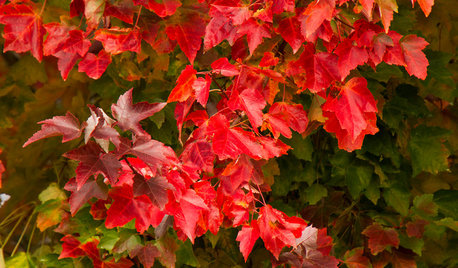Pear Tree Pollination Question
jusme_newby
14 years ago
Related Stories

EDIBLE GARDENSHow to Grow Your Own European and Asian Pears
Try these trees for their good looks, delicious fruit and wide range of sizes — plus you can espalier them
Full Story
GARDENING GUIDESNo-Regret Plants: 5 Questions Smart Shoppers Ask
Quit wasting money and time at the garden center. This checklist will ensure that the plants you're eyeing will stick around in your yard
Full Story
EDIBLE GARDENSHow to Add an Apple Tree to Your Edible Garden
Readily available, beautiful and fragrant, apple trees offer four-season interest along with crisp, juicy fruit
Full Story
EDIBLE GARDENSWhy Grow Quince? For Beauty, Fragrance and Old-Time Flavor
Delightfully perfumed fruit and lovely spring blossoms make this apple and pear cousin worth a spot in the garden
Full Story
FARM YOUR YARDIf You Have Room for Only One Fruit Tree ...
Juice up a small garden with one of these easier-care or worth-the-effort fruit trees for a mild climate
Full Story
EDIBLE GARDENSHow to Grow 10 Favorite Fruit Trees at Home
Plant a mini orchard in fall, winter or early spring to enjoy fresh-off-the-tree fruit the following year
Full Story
GARDENING GUIDESPlant Black Cherry Trees for the Birds and Bees
Plant Prunus serotina in the Central and Eastern U.S. for spring flowers, interesting bark and beautiful fall color
Full Story
TREESGreat Design Plant: Acer Rubrum Brings Shade and Beauty
Red maple — a fast-growing, low-maintenance Eastern native — has spectacular fall foliage and early-spring flowers that feed pollinators
Full Story
GARDENING GUIDESHow to Keep Your Citrus Trees Well Fed and Healthy
Ripe for some citrus fertilizer know-how? This mini guide will help your lemon, orange and grapefruit trees flourish
Full Story
LANDSCAPE DESIGN7 Great Trees for Summer Shade and Fall Color
These landscape-pro faves straddle the seasons beautifully. Could one enhance your own yard?
Full Story







olga_6b
jellyman
Related Professionals
Reading Landscape Architects & Landscape Designers · Folsom Landscape Architects & Landscape Designers · Horsham Landscape Architects & Landscape Designers · Clark Landscape Contractors · Edwardsville Landscape Contractors · Flagstaff Landscape Contractors · Fort Myers Landscape Contractors · Fort Wayne Landscape Contractors · Old Saybrook Landscape Contractors · Peachtree City Landscape Contractors · The Villages Landscape Contractors · West Coon Rapids Landscape Contractors · Selma Landscape Contractors · Palos Heights Landscape Contractors · Gulf Gate Estates Tree Serviceslogrock
Jim.mustang2010
Noogy
ahajmano
franktank232
alan haigh
murkwell
hoosierquilt USDA 10A Sunset 23 Vista CA
alan haigh
milehighgirl